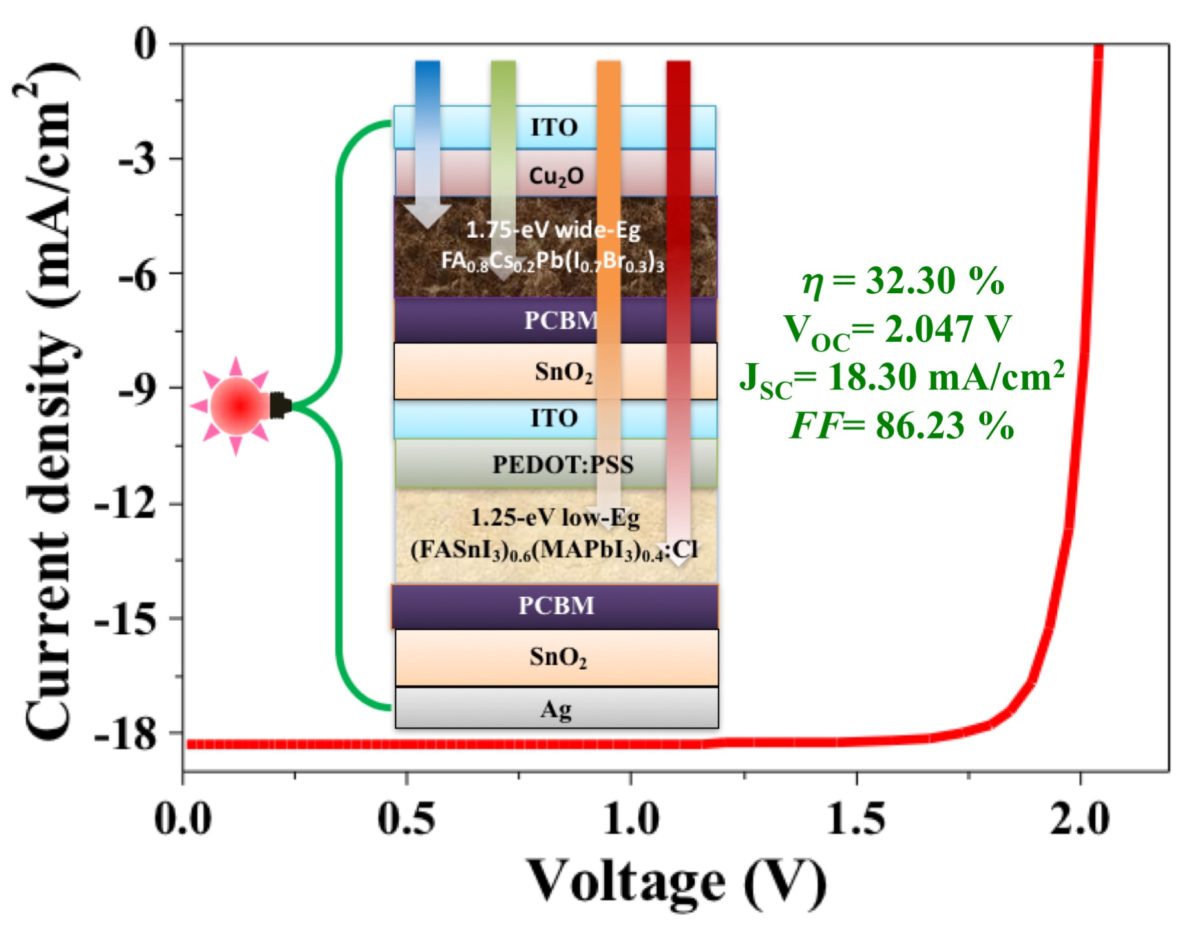From pv magazine Global
Scientists from the Central University of Jharkhand in India have simulated a new all-perovskite two-terminal tandem solar cell. It reportedly has a 13% higher efficiency than similar devices with the same materials at the research level.
“This technology is directly transferable to real production,” researcher Basudev Pradhan told pv magazine. “Few solar companies are already making perovskite/silicon tandem solar cells which are on the verge of commercialization. We believe all perovskite tandem solar cells also can be manufactured commercially without being much dependent on costly silicon wafers.”
The researchers used SCAPS-1D solar cell capacitance software, which is a simulation tool for thin-film solar cells developed by the University of Ghent in Belgium.
“Through this software, different types of solar cells can be configured by varying up to seven layers for which simulation is carried out under both dark and illumination conditions of AM 1.5G 1 sun spectrum,” they said.
In order to make the simulation more realistic, they also considered bulk defects in all the layers and interface defects between layers. They built the cell with a top perovskite cell featuring a wide bandgap of 1.75 eV and a bottom perovskite cell with a bandgap of 1.25 eV.
The top cell is designed with an indium tin oxide (ITO) substrate, a hole transport layer (HTL) based on copper(I) oxide (Cu2O), a perovskite layer, a bathocuproine (BCP) buffer layer, and tin(IV) oxide (SnO2) buffer layer. The bottom cell relies on an ITO substrate, a hole-transporting material (HTM) based on PEDOT:PSS, a perovskite material, an electron acceptor made of phenyl-C61-butyric acid methyl ester (PCBM), a SnO2 buffer layer, and a metal contact made of silver (Ag).
Simulated under standard illumination conditions, the top cell exhibited an efficiency of 12.37%, an open-circuit voltage of 0.806 V, a short-circuit current of 18.30 mA/cm2, and a fill factor of 83.91%. The bottom cell achieved an efficiency of 19.93%, which brought the overall tandem device to 32.3%. The scientists said this compares to an efficiency of 23.72%, as achieved in similar devices built with the same materials at the research level. The tandem cell also has an open-circuit voltage of 2.047 V, a short-circuit current of 18.30 mA/cm2, and a fill factor of 86.23%.
“This simulation work provides insights into quantifying PV parameters limitation and understanding interdependency of one upon another with respect to device performance,” the academics explained. “It also helps in finding an optimized value of various device layer thicknesses along with ETL-HTL combination and its relation with device performance.”
“We haven’t made an accurate cost estimation of the solar cell so far,” Pradhan said. “But the LCOE for perovskite modules built with this cell technology is definitely lower than the present mainstream crystalline silicon-based modules.”
The research team presented the solar cell tech in “All-perovskite two-terminal tandem solar cell with 32.3% efficiency by numerical simulation,” which was recently published in Materials Today Sustainability.
“This work provides a new direction for experimental realization with higher power conversion efficiency and establishes a new route toward the development of all-perovskite tandem solar cells,” the group concluded.
This content is protected by copyright and may not be reused. If you want to cooperate with us and would like to reuse some of our content, please contact: editors@pv-magazine.com.









By submitting this form you agree to pv magazine using your data for the purposes of publishing your comment.
Your personal data will only be disclosed or otherwise transmitted to third parties for the purposes of spam filtering or if this is necessary for technical maintenance of the website. Any other transfer to third parties will not take place unless this is justified on the basis of applicable data protection regulations or if pv magazine is legally obliged to do so.
You may revoke this consent at any time with effect for the future, in which case your personal data will be deleted immediately. Otherwise, your data will be deleted if pv magazine has processed your request or the purpose of data storage is fulfilled.
Further information on data privacy can be found in our Data Protection Policy.